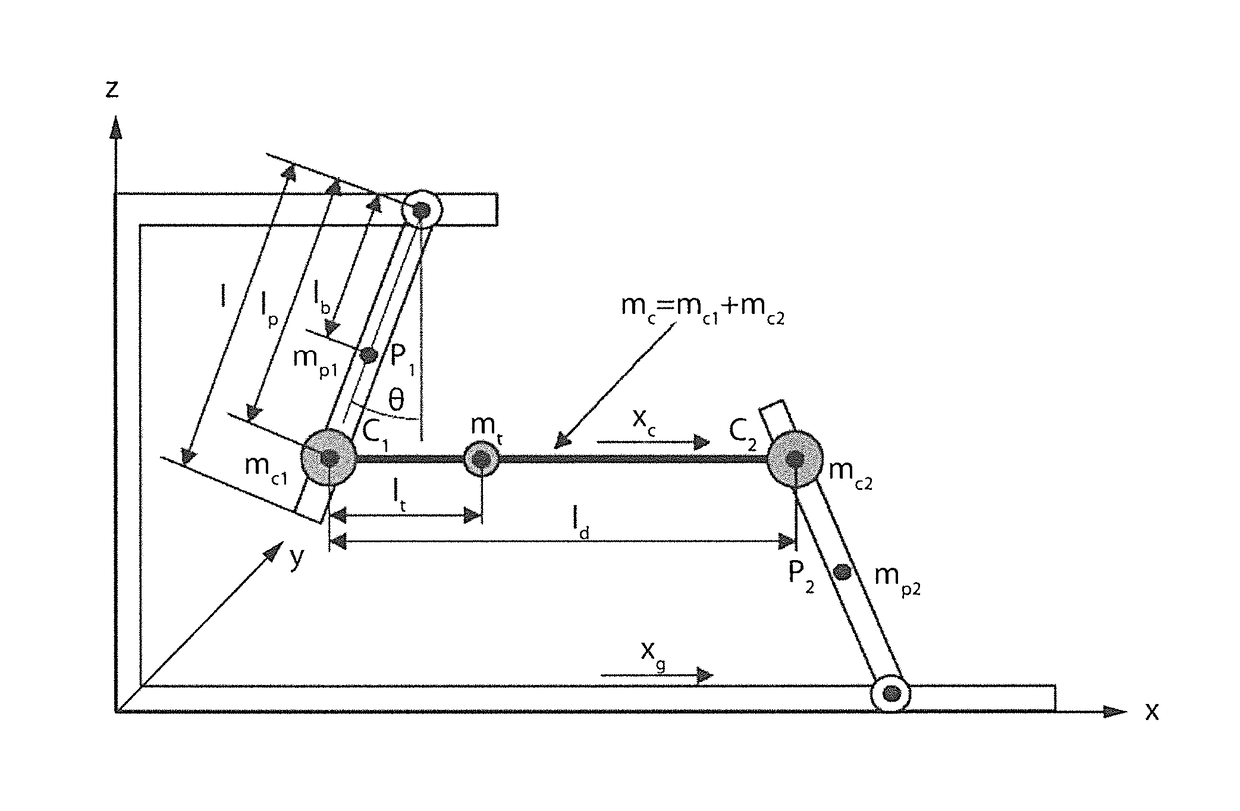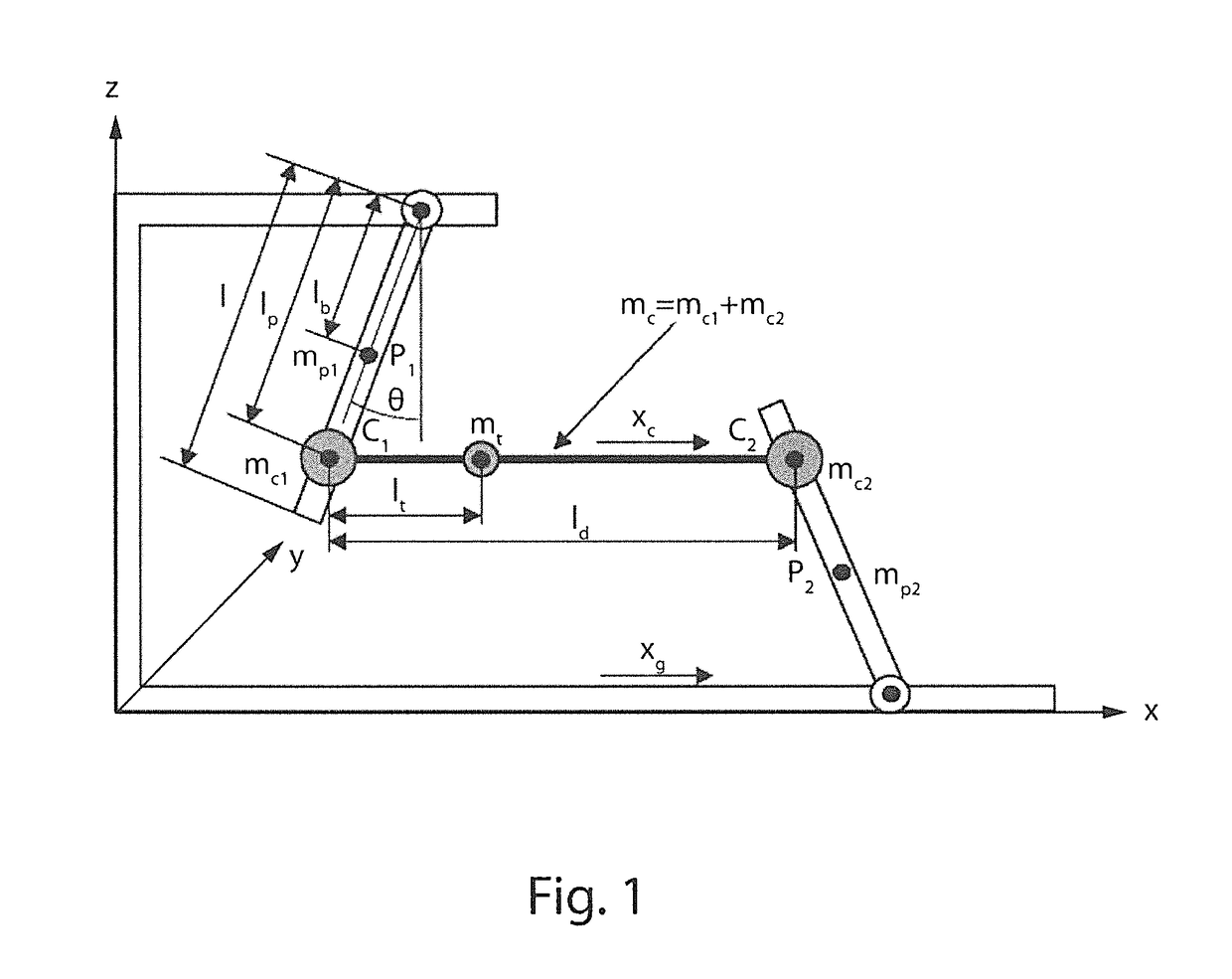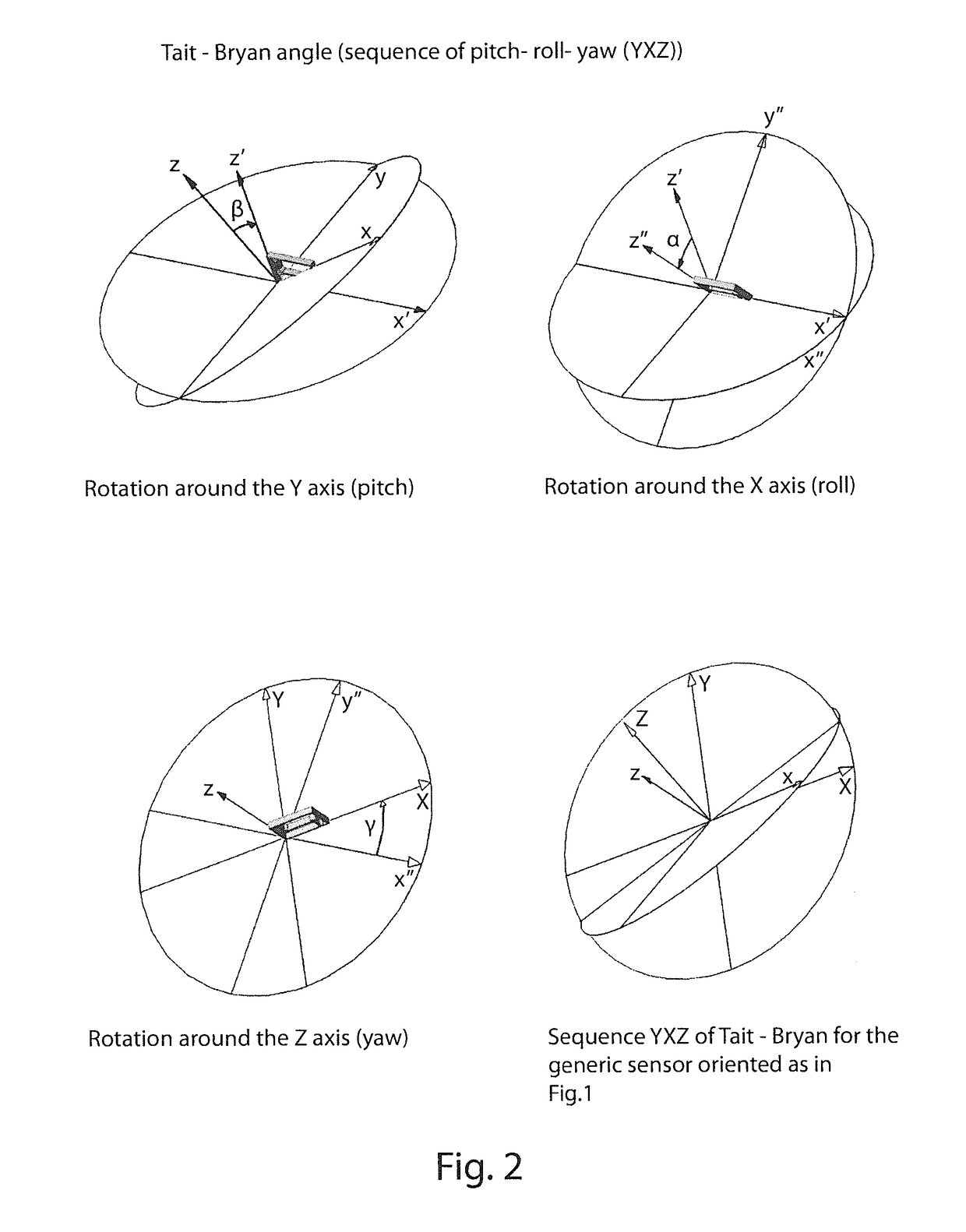Method For The Measurement Of Angular And/Or Linear Displacements Utilizing One Or More Folded Pendula
a technology of angular and/or linear displacement and pendula, which is applied in the direction of instruments, seismic signal receivers, speed/acceleration/shock measurement, etc., can solve the problems of limited effective and extensive utilization, disadvantage of being more sensible to non-homogeneous local perturbations, environmental and/or meteorological types, and difficult to achieve high sensitivities
- Summary
- Abstract
- Description
- Claims
- Application Information
AI Technical Summary
Benefits of technology
Problems solved by technology
Method used
Image
Examples
Embodiment Construction
Principle of Functioning of the Invention
[0037]The innovation principle of the angular motion / position sensor based on the folded pendulum, the sensor having high sensitivity and wide measurement band, arises from the original monolithic seismic sensor model termed “folded pendulum”, described in [1], and the subsequent and effective improvements of the models and technology as described in [11] and [12], even by means of two innovative realizations that already led to two International patent applications for a horizontal [9] and vertical [10] folded pendulum.
[0038]As it will be described in detail in the following, such an angular displacement sensor based on the folded pendulum has been invented as a consequence of an interpretation, that is totally innovative and never discussed in literature, of the equations describing the behavior of the horizontal folded pendulum as known in literature [2-13], interpretation which constitutes a real innovative model.
[0039]The validity of suc...
PUM
 Login to View More
Login to View More Abstract
Description
Claims
Application Information
 Login to View More
Login to View More - R&D
- Intellectual Property
- Life Sciences
- Materials
- Tech Scout
- Unparalleled Data Quality
- Higher Quality Content
- 60% Fewer Hallucinations
Browse by: Latest US Patents, China's latest patents, Technical Efficacy Thesaurus, Application Domain, Technology Topic, Popular Technical Reports.
© 2025 PatSnap. All rights reserved.Legal|Privacy policy|Modern Slavery Act Transparency Statement|Sitemap|About US| Contact US: help@patsnap.com



